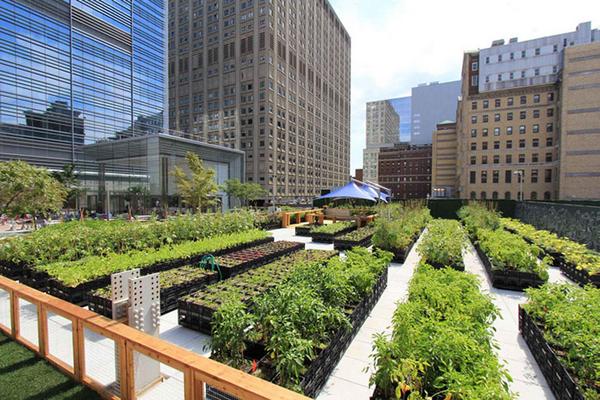Not known Facts About City Blooming
Not known Facts About City Blooming
Blog Article
The Basic Principles Of City Blooming
Table of ContentsFascination About City BloomingHow City Blooming can Save You Time, Stress, and Money.The Greatest Guide To City BloomingThe 25-Second Trick For City BloomingSome Known Incorrect Statements About City Blooming
Interested in expanding food for sale in the City of Chicago? Below is a checklist of often asked concerns relating to the guidelines and policies that cultivators should take into consideration when preparing a city agriculture job.
The zoning amendment does not change any various other codes taking care of composting, structure licenses, purchasing or renting City had home, business licenses or environmental contamination. There are existing codes that manage these concerns and they stay in complete impact and may apply to your task. Community yards are commonly had or managed by public entities, public companies or community-based organizations and preserved by volunteers.
Urban farms expand food that is meant to be sold, either on a not-for-profit or for-profit basis. Due to their commercial objective, urban ranches require a business certificate.
The Best Guide To City Blooming
Composting is permitted yet only for plant product that is generated and used on site. The quantity of garden compost product can not surpass 25 cubic lawns at any type of provided time according to the criteria in 7-28-715 of the City's Municipal Code. Yes. Due to the fact that the soil at many new yard sites requires changing, compost, dirt, wood chips, or various other products can be obtained to create or improve the expanding space - eco-friendly practices.

If a building permit is called for after that the hoophouse will be thought about an accessory building. You can discover even more concerning the building authorization demands by calling the Department of Structures. The 25,000-square-foot size restriction is meant to avoid a solitary neighborhood yard from dominating an offered block or diminishing the block's existing residential or commercial character.
The limit does not use to yards found in Public Open Space (POS) districts. Can there be more than one neighborhood yard that is 25,000 square feet on a solitary block? Fencing is not needed, nonetheless, yards that have big car park areas may be needed to mount fencing or other landscaping functions.
Some Known Factual Statements About City Blooming
B1 & B2 districts require that all business usage tasks be carried out indoors. Is fencing required for urban ranches? Fences might be required, along with landscaping and testing, for certain vehicle parking areas and exterior work or storage space areas depending on place and the specific activity taking place.
Urban ranches call for building authorizations and zoning authorizations prior to construction (fruit and vegtables). Other forms of city testimonial may be called for depending on certain frameworks, activities, dimension, landscaping, licensing, public health and stormwater management concerns.
Yes. The sort of certificate is figured out by what is happening at the website. The Department of Organization Affairs and Customer Defense can assist establish the certain kind of company certificate that's required. Yes. Off road vehicle parking is needed for many business article tasks in Chicago. The required number of car parking rooms is based on the number of workers servicing website and not the square video of the growing room.
What Does City Blooming Mean?

An urban ranch can market garden compost product generated on site, nonetheless, the operation has to abide with the laws in 7-28-715 of the Chicago Municipal Code. Aquaponic systems are permitted inside on city ranches in many zoning districts.
Up to 5 hives or swarms of honey may be kept as an accessory use. Beekeepers should register with the Illinois Division of Agriculture. For more information concerning the recommended zoning modification you might speak to the Division of Real Estate and Economic Advancement, Bureau of Planning and Zoning at 312.744.8563.
Farming in cities and metropolitan locations A city ranch in Chicago. Urban farming describes various techniques of growing. https://www.abnewswire.com/companyname/cityblooming.com_137622.html#detail-tab, handling, and distributing food in city areas. The term also uses to the location tasks of animal husbandry, aquaculture, beekeeping, and horticulture in an urban context. Urban farming is identified from peri-urban farming, which takes location in rural areas beside residential areas.
The Best Strategy To Use For City Blooming
, who look for to create social networks established on a common values of nature and area holism. These networks can establish by means of formal institutional assistance, becoming incorporated into regional town preparation as a "change community" activity for sustainable metropolitan development.
The extra direct access to fresh veggie, fruit, and meat products that might be understood with city agriculture can improve food safety and food safety and security while lowering food miles, bring about reduced greenhouse gas discharges, therefore adding to climate adjustment reduction. Several of the initial proof of city agriculture comes from Mesopotamia.
Report this page